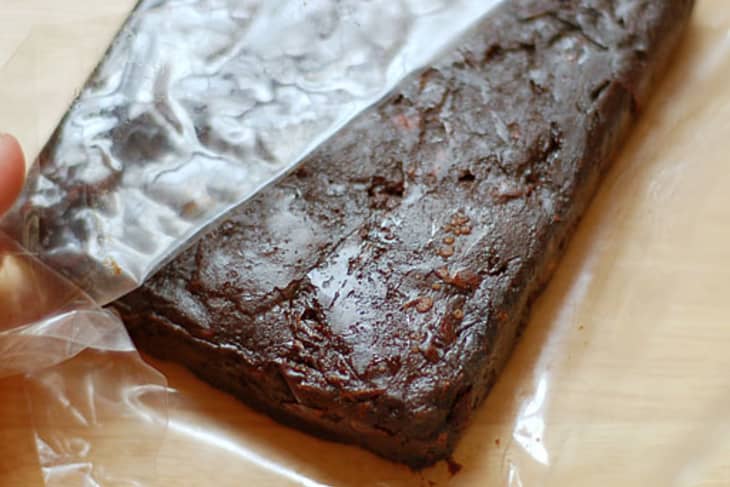Technique: How to Use Tamarind Pulp
Pad thai and many other
Southeast Asian dishes
These blocks of tamarind pulp are the tamarind fruit pods stripped of the outer husk and compressed tightly together. Sometimes the seeds are removed, but we usually find a few errant seeds even in packages marked “seedless.”
The pulp itself is very fibrous, so we need to soften it and push it through a fine-meshed strainer to separate the edible pulp from the strands of fiber.
First cut off the portion you need. It’s not an exact science, but we usually find that a 6-ounce chunk (about 1 cup) will give us between 1/2 and 3/4 cup of pulp.
Next, cover the pulp with boiling water. You’ll need about a cup of water for every cup of tamarind pulp. (Sorry – this is where the pictures become a bit…er…visually unappealing, if you catch our drift.)
Let the pulp sit for 15 – 20 minutes until softened. Use your fingers to mash it a little, and then push a bit at a time through a fine meshed strainer. We find that a spatula or small scraper is really helpful for this step. You’re essentially rubbing the fibers against the strainer to separate the pulp from the fibers. The pulp falls through and the fibers stay behind.
In the end, you should have a bowl full of soft tamarind paste that is about the consistency of apple sauce. This is now ready to be used and can be stirred directly into your dish.
If you like the taste of straight tamarind, try soaking the leftover tamarind fibers in water for a refreshing, flavored drink or chewing on the fibers for a little snack! Also, save the water that was used to soak the tamarind. You can use it in your cooking in place of some water or broth, or you can dilute it in fizzy water for another take on tamarind juice!
Related: How to Open a Durian Fruit
(Images: Emma Christensen for the Kitchn)
